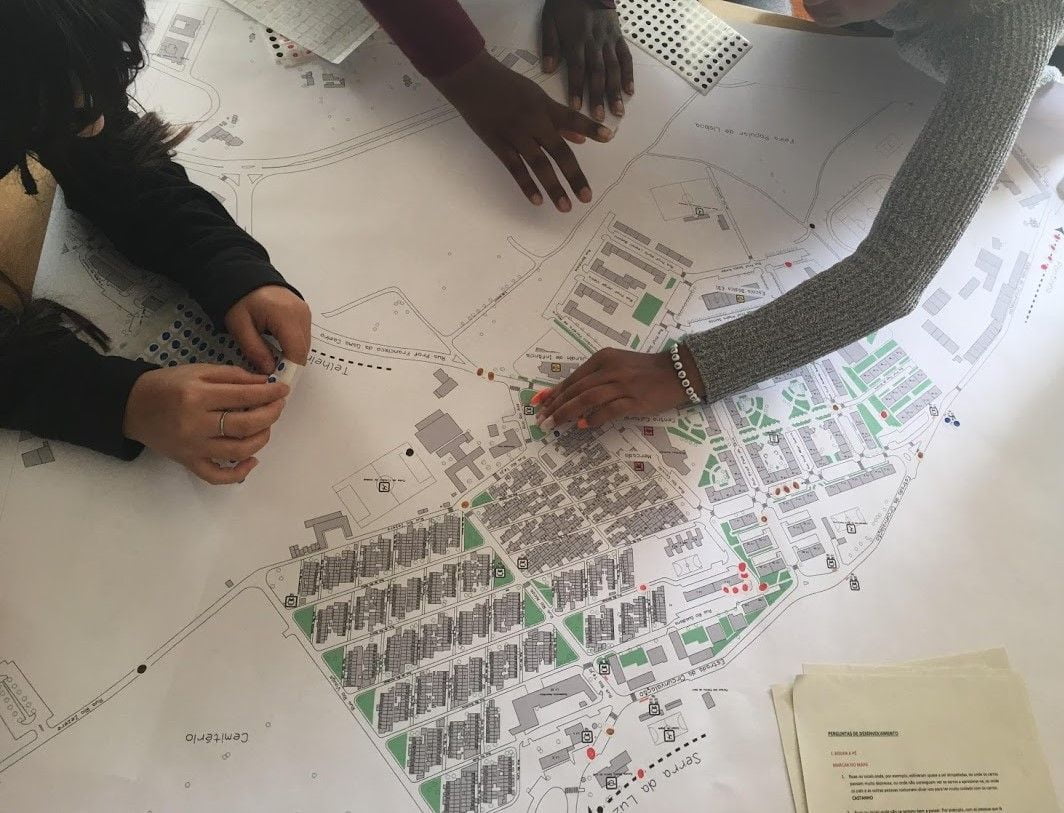Gender Mainstreaming: Creating inclusive mobility
In an attempt to secure a practical working definition of the term, POLIS’ Isobel Duxfield examines the shape that gender mainstreaming may take in women’s safety and security on public transport.
"Gender mainstreaming” has become a buzzword in mobility. The term, though frequently cloaked in a veil of acronyms and political vocabulary, denotes the process of assessing the implications for women and men, across design, implementation and evaluation of any action, legislation, policy, or programme. Despite growing attention to gender, the term “mainstreaming” remains somewhat obscure.
It is no secret urban mobility must be more gender inclusive; public transit schedules, sidewalk width, street lighting – the list continues; mobility has largely excluded women’s working patterns, childcaring roles and security requirements. However, from new POLIS member city Vienna’s redesign of public spaces to more recent enterprises such as Women Mobilise Women, a network of female change-makers, there have been a multiplicity of pioneering endeavours across Europe to bringing gender to the forefront of mobility planning.
More recently, CIVITAS’ publication, Addressing Gender Equity and Vulnerable Groups in SUMPs, provided a guide to implementing gender responsive and inclusive planning within a long term mobility framework. These initiatives call for gender to be taken more seriously, beyond equal ratios on conference panels, or cursive remarks about rising numbers of women riding bicycles; instead, gendered experience of accessibility, security and inclusivity must be integrated into the very definition of ‘sustainability’. But is this really mainstreaming?
Why do we need to mainstream gender in mobility?
Mobility patterns are determined by the gendered roles and responsibilities apportioned to males and females. Discrepancies in unpaid labour, salaried employment and leisure creates a disparate spatial and temporal geography of gendered transport usage.
This is not to say men and women hold entirely contrasting mobility practices; rather mobility patterns can frequently be explained by the sexual divisions of labour and the gendered ideals these create – patterns that vary according to financial wealth, physical ability, age and a range of other indices. As a result, policy makers, lobbyists, and researchers must confront the gendered nature of mobility to create successful and inclusive transit plans. This has been propelled to the fore during the COVID-19 pandemic. With women accounting for 78% of health and care workers, metropolitan areas have been forced to guarantee these frontline employees are able to move around the city with ease and have thus needed to accommodate the gendered nature of this movement. When it comes to safety and security in mobility policy, understanding mainstreaming is critical.
A plethora of research reveals insecurity in public space overwhelmingly affects women more than men, and in response, many cities and regions are implementing a range of violence reduction policies, and projects to rigorously address this issue. However, such approaches frequently seek rapid solutions, overlooking the long-term commitments required to instigate safe and secure mobility for all.
Gender and vulnerability: What is the relationship?
A step towards such comprehensive “mainstreaming” for safety and security, requires interrogating the relationship between ‘gender’ and ‘vulnerability’ in mobility. Transport policy must address women’s safety yet avoid casting female users as hapless victims of violence. The SUMP guide states its aim as addressing the accessibility needs of “women and vulnerable users”2, yet, placing these two groups side by side is not necessarily appropriate. The term “vulnerable” denotes a marginal group; however, women are by no means a minority – they make up half the population! While many female passengers indeed find themselves exposed to harassment when navigating the city- an issue we must undeniably confront- women do not uniformly identify with the term “vulnerability”, if at all. Consequently, designing and implementing “gender inclusion” initiatives must encompass, and unite, a spectrum of experiences and attitudes, engaging women from a variety of ethnic, age and professional backgrounds.
This was a key issue for the Road Safety and Security Working Group when meeting to discuss ‘Security of Women in Public Transport’. Early in October 2020, the group met to examine current efforts to make transit safer for women and share research being conducted in cities across the globe. At the meeting, Sian Lewis’ research on women’s experiences of sexual harassment on the London Underground highlighted this issue – a study which has received extensive media attention, and has been widely used in British Transport Police training material. Lewis’ qualitative interviews with victims reveal how experiences of harassment have long term implications for the way women navigate the city; from micro-behavioural adaptions like holding belongings closer, to abandoning public transport altogether.
Road Safety and Security Working Group on Women’s Safety in Public Transport
The Road Safety and Security Working Group is one of POLIS Network’s forums where Polis members meet regularly in working groups to exchange best practices and share knowledge on sustainable urban mobility. The group addresses road safety as well as the security of transport systems and public space in times of hostile vehicle attacks. In October 2020, the Working Group held a meeting to discuss Women’s Safety in Public Transport. The perceived and the actual risk of violence and sexual harassment in public transport can reduce women and girls’ freedom of movement and equal access to our cities. The meeting explored research being conducted on women’s experiences of public transport across Europe (and beyond) sharing best practices and further challenges. The meeting was part of a wider effort by POLIS to open a new front for exchange on gender and mobility, learning from policy experiences, and fostering cooperation between members and the wider civil society on this critical issue.
The Working Group is coordinated by Pedro Homem de Gouveia.
Yet, Lewis’ observation that women actively resisted male intrusions and reclaimed space on urban transport systems, highlights the multifaceted nature of vulnerability. Not all women interviewed perceived themselves as inherently disempowered by harassment, many regarded themselves as capable of fending off violence. This exposes the need for a more nuanced understanding of gendered experiences of mobility, acknowledging the multiplicity of experience is essential for future dialogues about gender and mobility. “Women” are not a homogenous group; mobility solutions cannot be a one-size-fits-all approach. Female students, care workers and middle-class professionals navigate urban transport in separate ways and seek different services from such networks.
This issue was highlighted in Lisbon’s Padre Cruz Neighbourhood Pilot Project. The project, discussed by Rita Jacinto from the city’s Pedestrian Accessibility Division during the Working Group meeting, exposed that women of different ages and socio-economic backgrounds regarded road safety, personal safety, and harassment in distinctly different ways. Therefore, placing “women” alongside migrants, older individuals and low income or unemployed groups risks overlooking the ways gendered vulnerability intersects – and augments – other axes of identity.

Focus group conducted with women and girls by Rita Jacinto , © Rita Jacinto
This undoubtedly further complicates our cities’ mobility agendas; nonetheless, gender inclusion ambitions will not be realised without attention to this complexity.


